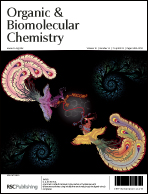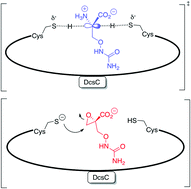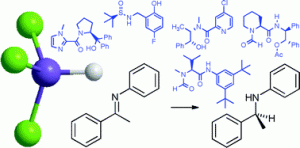
In this HOT communication Liming Zhang and colleagues at Hunan University demonstrate how α-oxo gold carbenes generated via intermolecular oxidation of terminal alkynes are highly electrophilic. So much so that they can effectively abstract halogens from halogenated solvents. They rationalise that this carbene is more electrophilic than related rhodium species due to the presence of only one α-carbonyl group, meaning it is less capable of back bonding.
Liming Zhang et al. believe that because of this differnece α-oxo gold carbenes may provide new opportunities for methodology development. To exemplify this they show that synthetically useful chloro/bromomethyl ketones can be prepared in one-step from terminal alkynes, avoiding the problems of poor regioselectivity and over-halogenation experienced by previous methods.
Sound interesting? Why not take a look, it’s FREE to access for the next 4 weeks.
Electrophilicity of α-oxo gold carbene intermediates: halogen abstractions from halogenated solvents leading to the formation of chloro/bromomethyl ketones
Weimin He, Longyong Xie, Yingying Xu, Jiannan Xiang and Liming Zhang
Org. Biomol. Chem., 2012,
DOI: 10.1039/C2OB25235J
















![GA[11]](https://blogs.rsc.org/ob/files/2012/03/GA111.gif)



